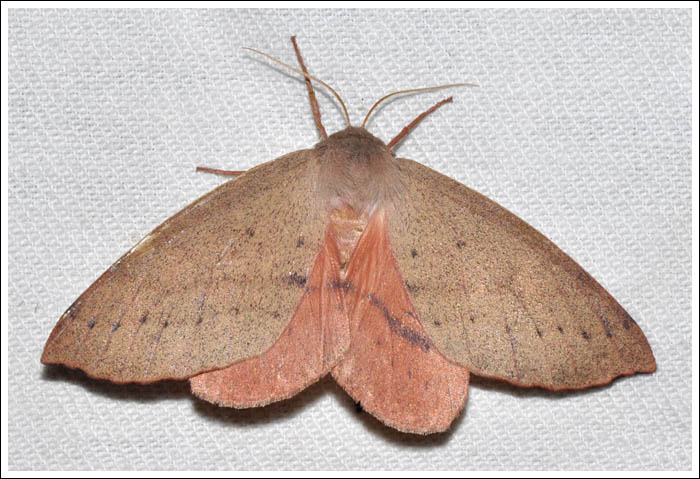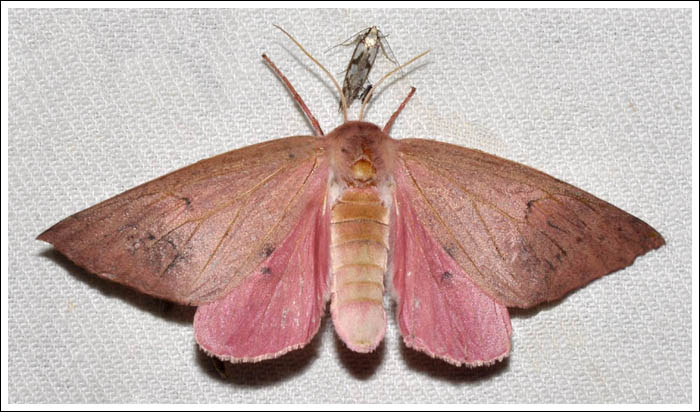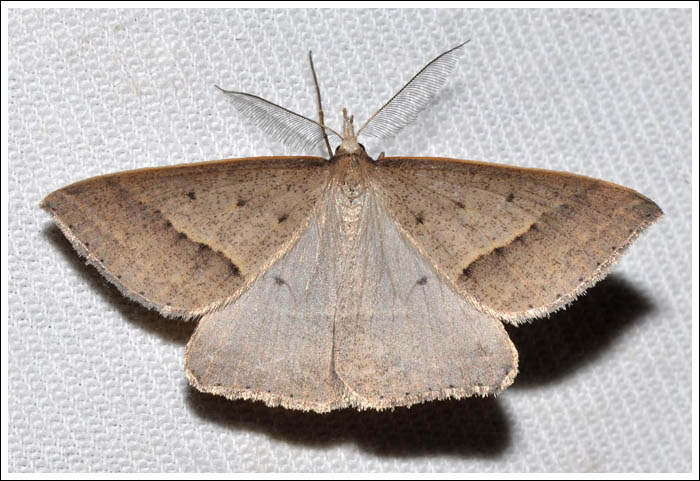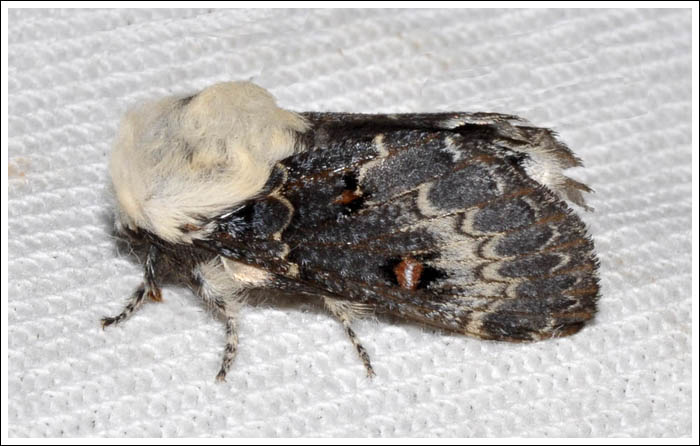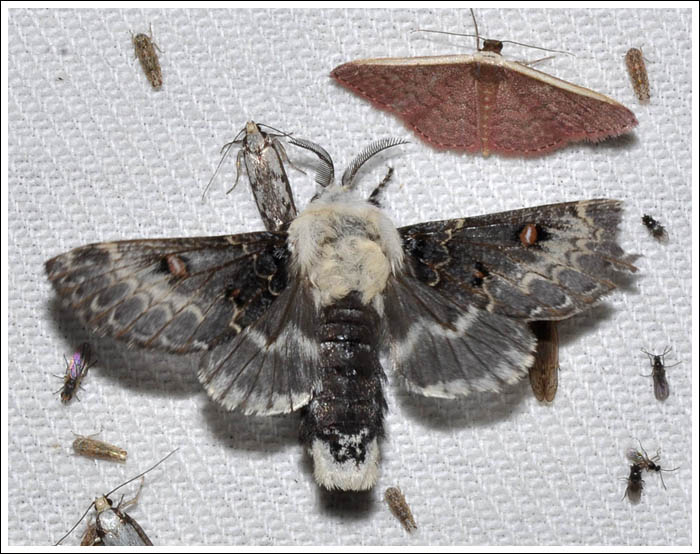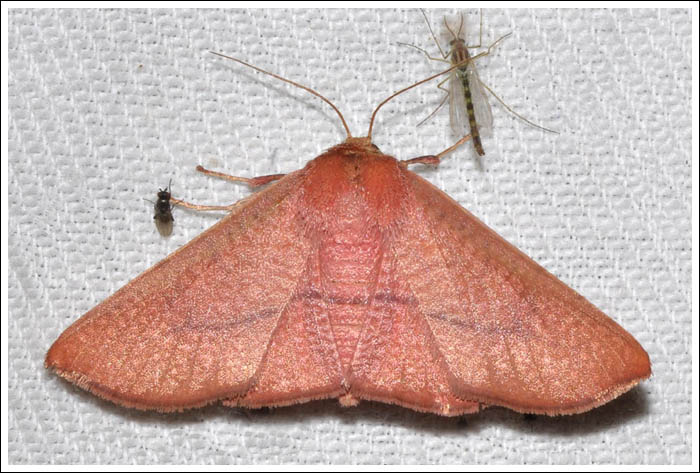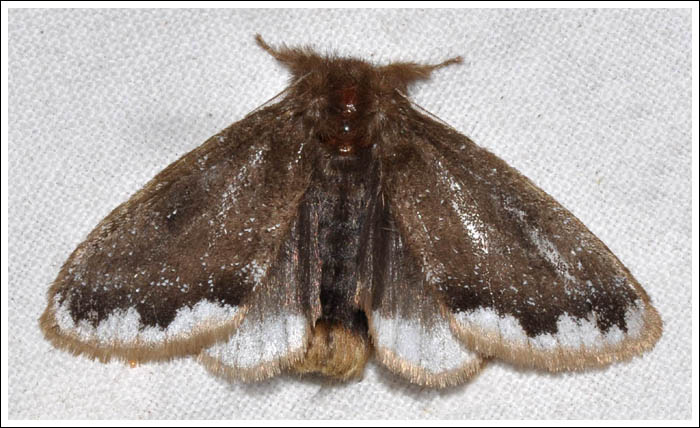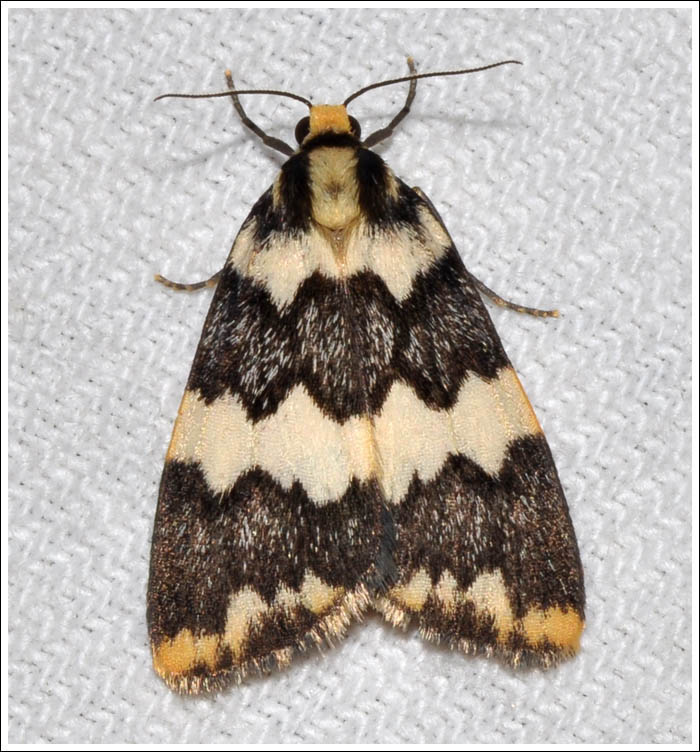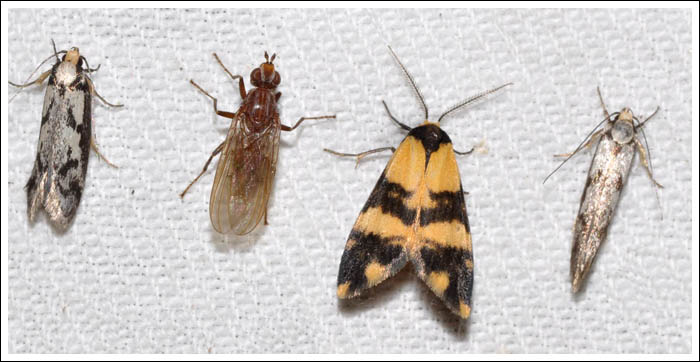This moth survey, the first of an on-going series, was held in an area of privately owned foothill forest that is unspoiled by fire or human activity, and managed for conservation. Habitat such as this is very hard to find in this day and age, and is of vital significance for both vertebrate and invertebrate fauna. It acts as a reservoir of species that can spread out and re-colonise other areas recovering after fire or other disturbance. This survey was held in an area of open bush, future visits will take place in denser habitat with slightly different vegetation profiles. Being autumn it was expected that Hepialids would be flying in, but strangely this was not the case. Early arrivals were small moths, with an unusual number of Asura lydia coming in during the night, larvae are lichen feeders.

Among the first larger moths to arrive were Discophlebia celaena, (Oenosandridae)
Male.

Female showing a lot of brown colour and strong black markings.

Among the small moths there were quite a few Footmen including one Scoliacma nana, the Diminutive Footman. Although not uncommon this was a first record.
Another first record was Stibaroma MOV sp(2) (Nacophorini) Two early records were from Noorinbee and Yackandandah, and in 2015 it was recorded at Fairy Dell, north of Wiseleigh. Several individuals came to the light so there must be a substantial population at this site sixty kilometres further west. Not all in the species have the pale cream markings, but it appears to be quite common here.
Males.
Female.
Most images will enlarge, to be continued.
References and further reading, Moths of Victoria, Volumes 2, 5.











